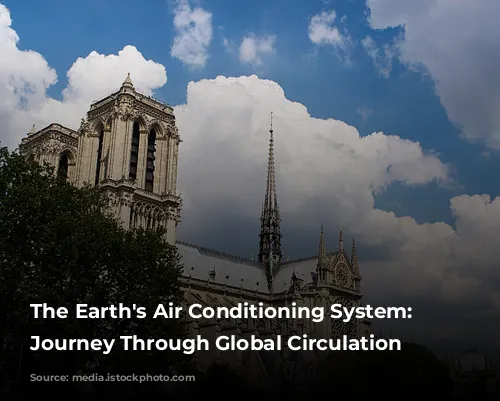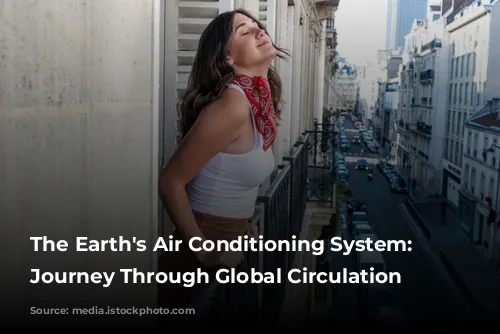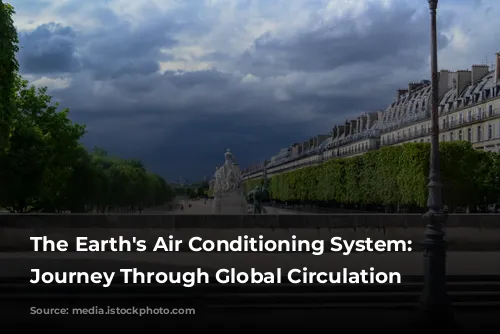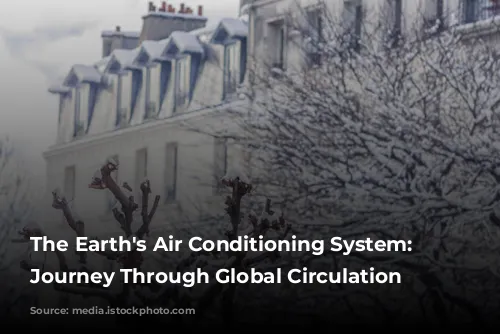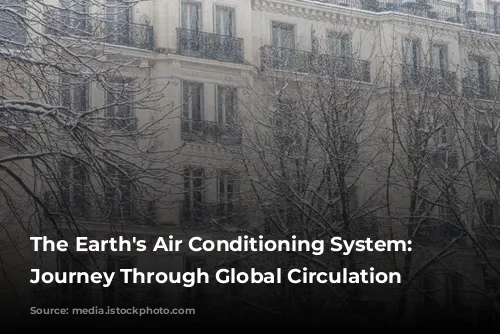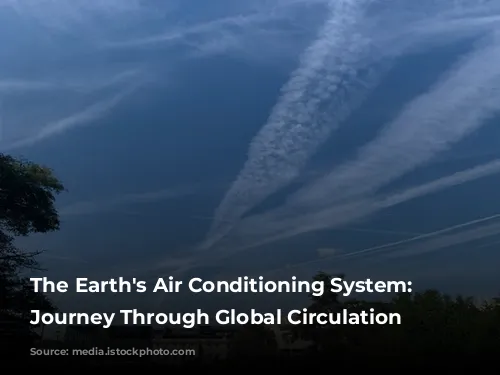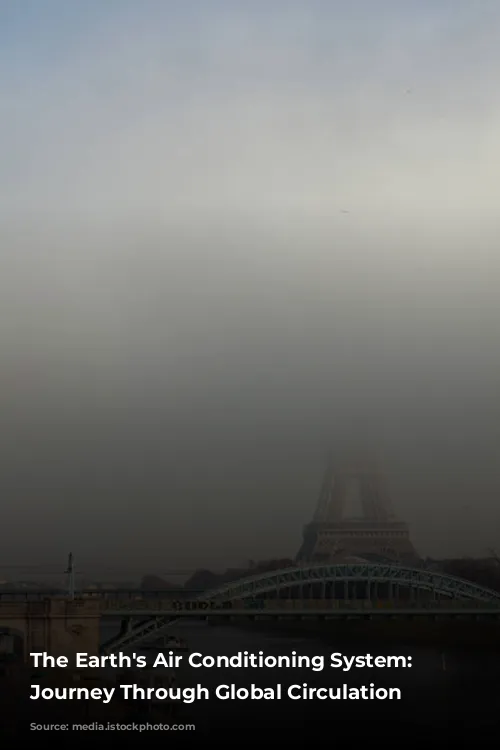The Earth’s atmosphere isn’t a stagnant blanket; it’s a dynamic system constantly in motion. Imagine a giant, invisible conveyor belt, transporting heat from the sun-drenched tropics to the frigid poles – this is the essence of global circulation.
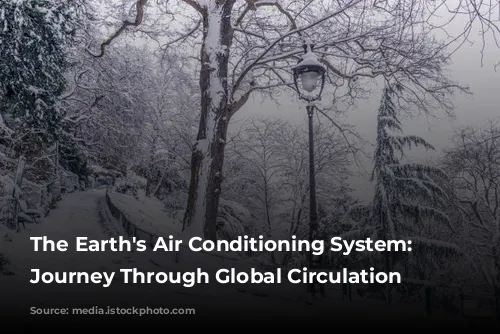
Three Cells, Endless Motion
Our planet’s atmosphere is divided into three major cells in each hemisphere: the Hadley cell, the Ferrel cell, and the Polar cell. Think of them as interconnected chambers, each with its own unique wind patterns and weather characteristics.
- The Hadley cell, named after English meteorologist George Hadley, is the largest cell. It starts near the equator, where the sun’s rays strike the Earth most directly, causing warm, moist air to rise. This rising air then flows towards higher latitudes, cools, and descends around 30 degrees north and south. This sinking air creates areas of high pressure, often associated with the world’s hot deserts, like the Sahara.
- The Ferrel cell is a middle cell that sits between the Hadley cell and the Polar cell. It’s more complex than the other two, with air flowing from the poles towards the equator at the surface. This cell is responsible for much of the unsettled weather experienced in the UK, as it brings warm, moist air from the tropics, which collides with cold, dry air from the poles.
- The Polar cell is the smallest and weakest of the three. It extends from the poles to around 60 degrees north and south. Cold, dense air sinks at the poles and flows towards lower latitudes at the surface, creating a pattern of easterly winds.

The Coriolis Effect: A Twist in the Wind
These cells aren’t simply moving in straight lines. The Earth’s rotation plays a crucial role, influencing the direction of these wind patterns. The Coriolis effect causes objects moving across the Earth’s surface to be deflected to the right in the Northern Hemisphere and to the left in the Southern Hemisphere.
This effect is particularly noticeable in the Ferrel cell. Although surface winds would ideally flow from south to north in the Northern Hemisphere, the Coriolis effect deflects them westward, resulting in the prevailing westerly and south-westerly winds often seen in the UK.
The Jet Streams: Highways in the Sky
The global circulation system also creates powerful jet streams, narrow bands of fast-moving air high in the atmosphere. These jet streams act like rivers in the sky, guiding weather systems across the globe.
The polar front jet stream, which forms along the boundary between the Ferrel and Polar cells, is especially important for the UK. It drives the areas of low pressure that bring the UK’s familiar unsettled weather.
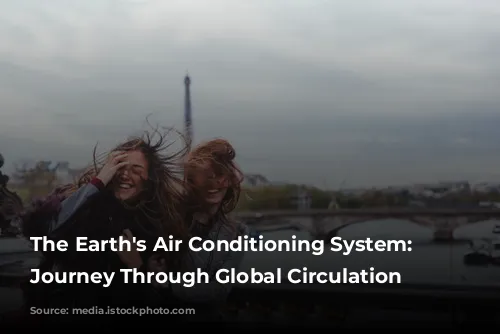
Weather Patterns: From Sunshine to Storms
The interplay of these cells and jet streams creates the diverse weather patterns we experience around the world.
- In summer, the polar front jet stream typically sits north of the UK, pushing weather systems away and bringing relatively settled weather.
- In winter, the jet stream moves further south, increasing the likelihood of unsettled weather, including snow if cold Arctic air masses move south.
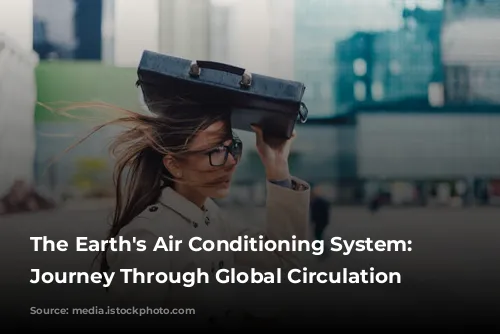
A Global Conveyor Belt
In conclusion, the global circulation system acts like a vast conveyor belt, transporting heat from the tropics to the poles, driving weather patterns across the globe. The three cells, the Coriolis effect, and the jet streams all work together to create the dynamic atmosphere we live in. So next time you see a storm rolling in or enjoy a sunny day, remember that you’re witnessing the intricate workings of this incredible planetary system.
